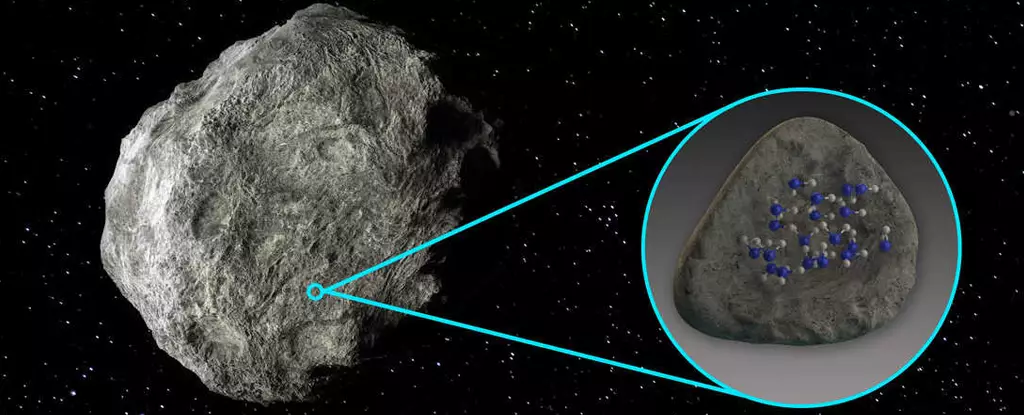Our Solar System is a vast collection of celestial bodies, ranging from planets and moons to comets and asteroids. While asteroids were believed to have lost any water they once contained, a recent study using data from the SOFIA infrared telescope has revealed the presence of water on two asteroids, Iris and Massalia. This discovery challenges previous assumptions about the composition of asteroids and offers valuable insights into the distribution of water in our Solar System.
Among the approximately 1 million known asteroids, Iris stands out with a diameter of 199 km (124 miles), making it larger than about 99 percent of other asteroids. It resides within the asteroid belt, located between Mars and Jupiter, completing one orbit around the Sun every 3.7 years at an average distance of 2.39 astronomical units. Massalia, comparable in size to Iris with a diameter of 135 km, shares a similar orbit. The composition and structure of asteroids vary across the Solar System, with silicate asteroids dominating closer to the Sun and icy asteroids becoming more common further out.
Studying the distribution of asteroids helps scientists gain a deeper understanding of the composition and elemental transfer that occurred in the solar nebula during the formation of planets and asteroids. The detection of water on Iris and Massalia provides crucial insights into the prevalence of water throughout our Solar System. This knowledge not only enhances our comprehension of the conditions necessary for the formation of life but also informs our understanding of exoplanetary systems and the potential existence of extraterrestrial life.
The Stratospheric Observatory for Infrared Astronomy (SOFIA), which retired in 2022, played a significant role in uncovering the presence of water on these asteroids. In October 2020, SOFIA made a groundbreaking discovery by identifying water on the Moon. Utilizing its Faint Object InfraRed Camera (FORCAST), SOFIA detected the spectral signature of water molecules on the Moon’s surface, estimating a concentration of approximately 350 milliliters of water per cubic meter of soil. Dr. Anicia Arredondo, the lead author of the study, confirmed that the volume and prevalence of water on Iris and Massalia were consistent with those found on the Moon, locked within minerals and absorbed by silicates.
The research also attempted to analyze data from two other asteroids, Parthenope and Melpomene. However, the analysis was inconclusive due to high levels of noise and the limited sensitivity of the FORCAST instrument. Future investigations will require more advanced instruments to achieve a better signal-to-noise ratio and successfully identify the spectral features of water on these asteroids, if present. The team plans to utilize the James Webb Space Telescope for further analysis. With its higher-quality optics and improved sensitivity, this telescope promises to expand our knowledge of water distribution across the Solar System.
The recent discovery of water on asteroids Iris and Massalia challenges conventional wisdom about the dry nature of asteroids. This finding underscores the importance of continued exploration and investigation, as it offers valuable insights into the composition and distribution of water within our Solar System. By utilizing advanced observational instruments like SOFIA and future telescopes such as the James Webb Space Telescope, scientists will be able to unravel the mysteries surrounding water in the Solar System, paving the way for a deeper understanding of our cosmic neighborhood.


Leave a Reply